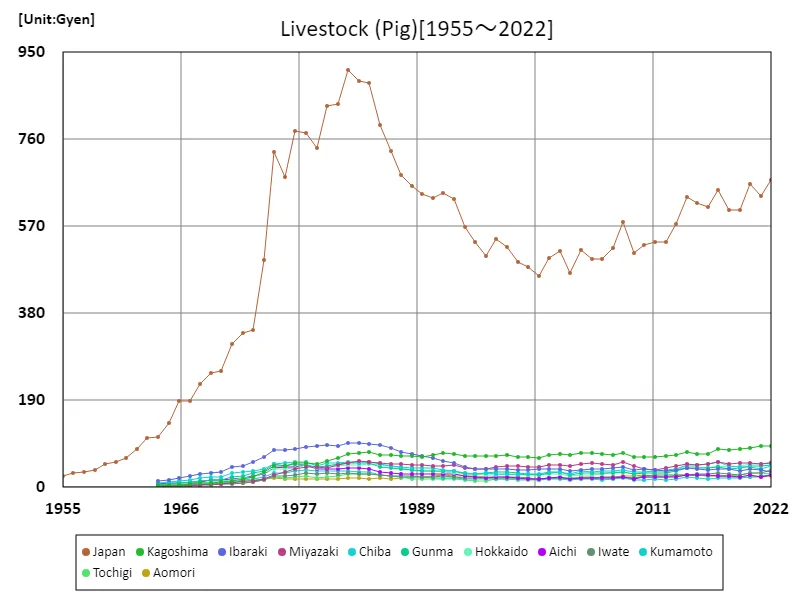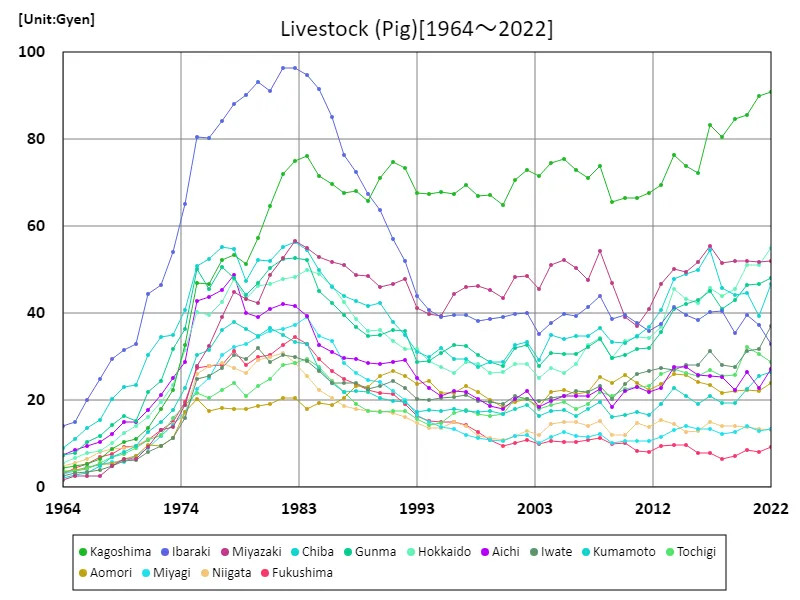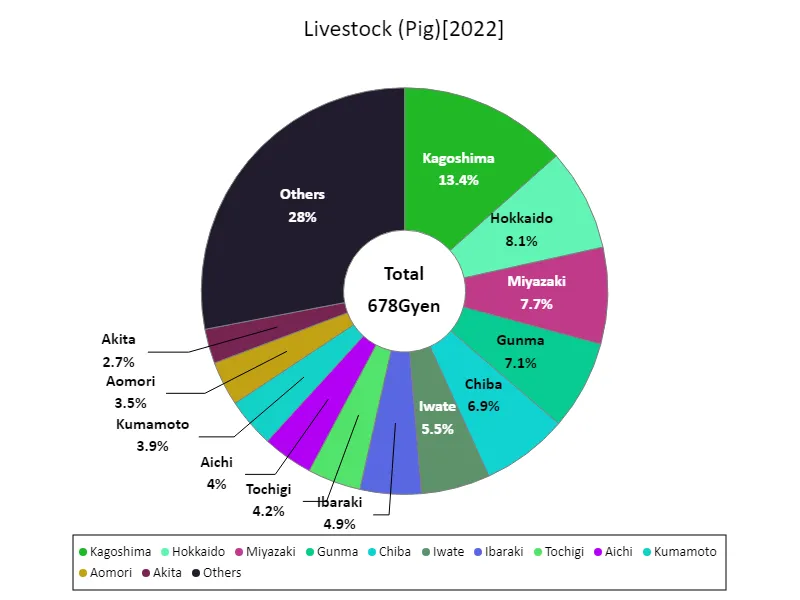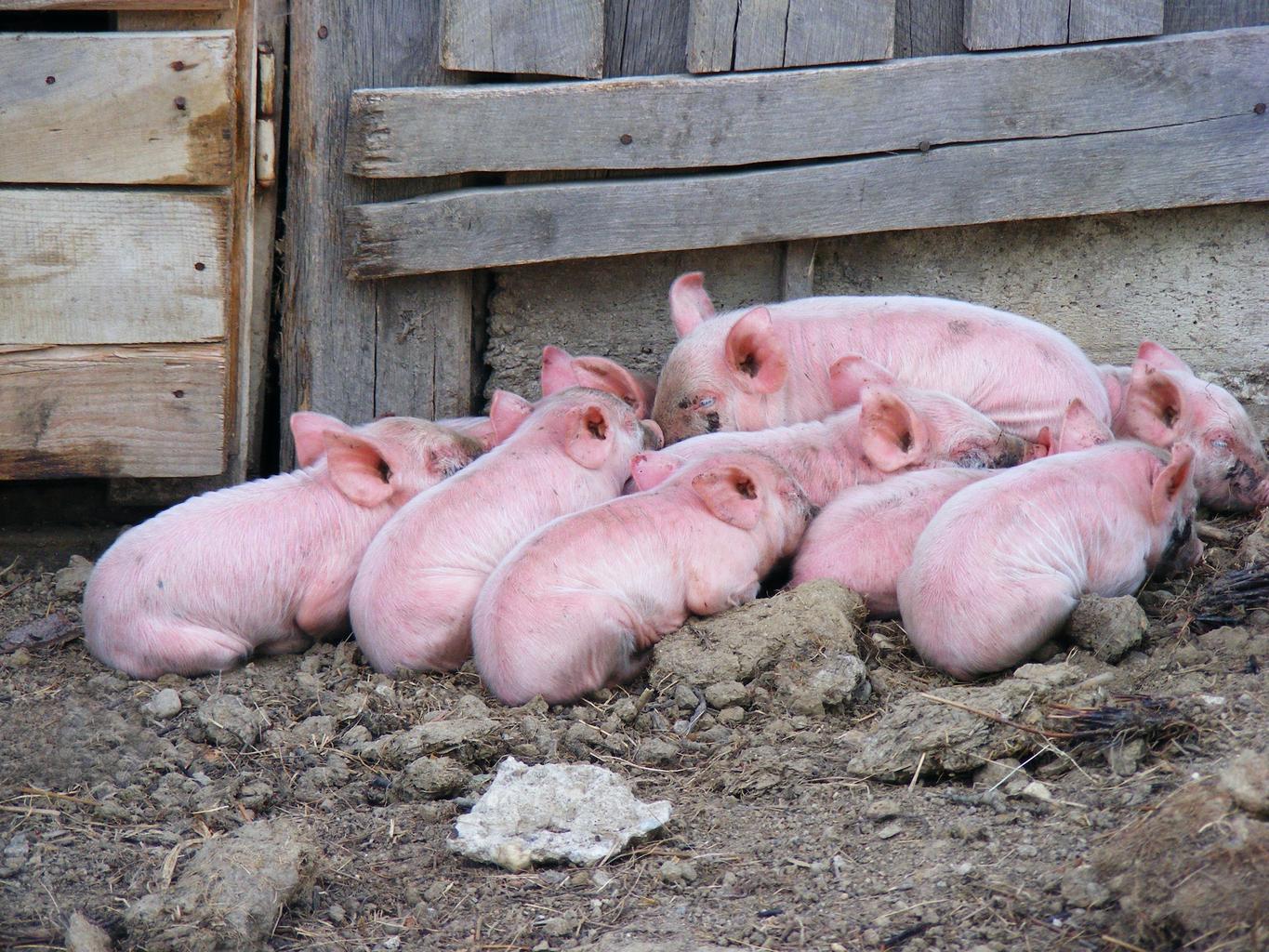Abstract
Pig income accounts for a significant portion of livestock production in Japanese agriculture. According to data from 2022, income from farm pigs reached 671 billion yen nationwide. This shows how important pork production is to Japan’s livestock industry. Pork is widely accepted as a food by Japanese consumers, and demand is growing accordingly. It also enables farmers and producers to remain competitive in the market by providing high-quality pork. Furthermore, with growing health consciousness in recent years, the demand for low-fat, high-protein pork has also increased. These trends are motivating farmers to innovate and improve production methods.
Pig production income
Japan’s pig livestock income has changed from 1955 to 2022. At its national peak in 1982, it reached 911 billion yen, but has fluctuated since then. However, current incomes are only 73.7% of their peak levels. This fluctuation is due to a variety of factors, including economic and social changes and changing consumer tastes. In recent years, growing interest in food safety and animal welfare, as well as competition from imports, have had an impact on the livestock industry. In addition, environmental issues and resource constraints are also affecting the livestock industry, calling for a shift towards sustainable production methods. In this situation, livestock producers are focusing on efficient production methods and providing high-quality products.


The maximum is 911Gyen[1982] of Japan, and the current value is about 73.7%
Pig production income (by prefecture)
Income from pig farming in Japanese agriculture has fluctuated between 1964 and 2022. The peak was Ibaraki’s record of 96.4 billion yen in 1983, and today it stands at just 34.2% of that amount. These fluctuations are due to changes in pork demand, agricultural policies, economic conditions, etc. In recent years, the diversification of pork consumption and competition from imports have had an impact on local livestock incomes. In addition, growing concern about environmental issues and animal welfare is also affecting the livestock industry. Taking these factors into consideration, there is a need to develop a sustainable livestock industry and revitalize the local economy.


The maximum is 96.4Gyen[1983] of Ibaraki, and the current value is about 34.2%
Pig production income (latest year, prefecture)
According to 2022 data, Kagoshima recorded the highest income from pigs in Japan’s livestock industry, at 90.9 billion yen. The overall average income was 14.4 billion yen, totalling 678 billion yen. These figures show that pig farming occupies an important position in Japanese agriculture. Pork is an essential part of Japanese food culture and demand is stable. Although incomes vary by region, the livestock industry as a whole has experienced steady growth. Furthermore, there is a trend toward improved productivity thanks to technological innovation and improved efficiency. However, there is also growing interest in environmental issues and animal welfare, and there is a demand for the development of sustainable livestock farming.


The maximum is 90.9Gyen of Kagoshima, the average is 14.4Gyen, and the total is 678Gyen



Comments